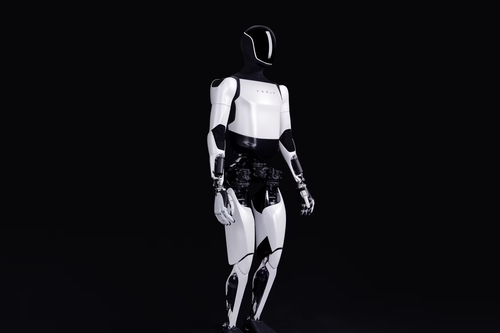Humanoid robotics has evolved beyond clumsy videos and lab experiments. In 2020, Boston Dynamics made a big impact when it showcased its robots dancing to The Contours’ Do You Love Me? Since then, several companies have sought to demonstrate that their robots also have got the moves. Tesla recently shared a series of videos of its bipedal robot Optimus, which the company claims showcase real progress without any special effects.
In one video, Optimus performs a brief sequence of rhythmic movements, all trained through simulation. Optimus engineering head Milan Kovac explained on X that the robot was trained using reinforcement learning. He clarified that the cable visible on its back wasn’t supporting the robot. It was only there for safety in case of a fall. “This is an early result which will get more stable very quickly,” he added.

A second demo shows the robot with no wires. Optimus seems to move more fluidly. Kovac pointed out that everything was done in real time, without the use of CGI. According to him, the movements were learned in simulation and then transferred to the physical robot.
He also explained that achieving this required improvements to the simulation model. The team also employed techniques like domain randomization and fine-tuned the hardware’s energy profile. “Besides the fact that it’s fun, we had to make significant improvements… [that] will directly transfer to more practical situations as well (robust walking, and agile full-body control in general),” Kovac said.
Real Moves, No CGI
Tesla claims that these advancements aren’t merely for show. According to Kovac, the purpose of this simulation work is to enhance the robot’s ability to walk steadily and adapt to challenging tasks in the physical world. In this sense, choreography serves as a way to test and demonstrate progress.
While the videos have generated excitement, Tesla isn’t the only player in this field. Unitree Robotics has been showcasing its robots on social media for months, featuring everything from synchronized dance routines to boxing matches against humans. In this context, Optimus joins a trend where expressive movement becomes a hallmark of advanced motor skills.
Tesla is actively pursuing its ambitious goal of developing a general-purpose autonomous robot. Optimus is designed to handle repetitive, tedious, and dangerous tasks. To achieve this, the company is working on specialized technology while also leveraging advancements made in its automotive sector.
So far, Tesla has only released brief demos that lack complex interactions with the environment. However, if the company’s promises are fulfilled, more advanced capabilities could be on the horizon.
Related | China and Elon Musk Are Now Competing Over Humanoid Robots. We’re In for a Long Ride



